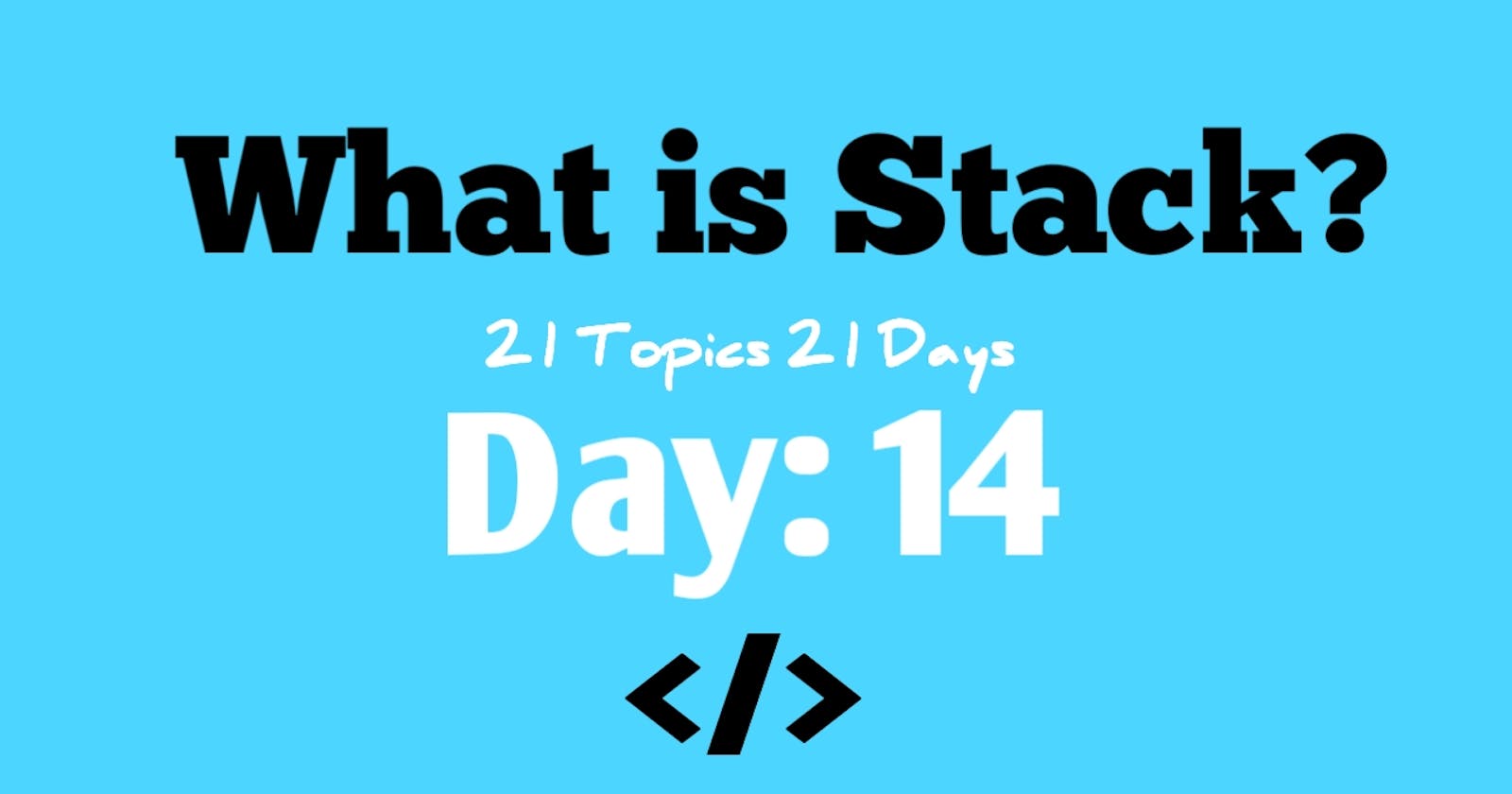A Stack is a linear data structure that operates in the Last In First Out (LIFO) order. The elements are stored in a linear fashion where the addition or removal of elements can only be performed at one end, called the top of the stack. It is similar to a pile of plates or books, where the last item added to the pile is the first one to be removed.
In computer science, the stack is used in various algorithms and data structures, such as function calls, undo-redo operations, and parsing of expressions. The main operations performed on a stack are push and pop. The push operation adds an element to the top of the stack, while the pop operation removes the top element from the stack. A stack can be implemented in various programming languages using arrays or linked lists. In an array-based implementation, the top of the stack is represented by an index that points to the last element in the array. In a linked list-based implementation, each node represents an element in the stack, and the link between nodes represents the order of elements in the stack. One of the main advantages of using stacks is that they are efficient in terms of time complexity. Both push and pop operations take O(1) time, making the stack an efficient data structure for real-time applications. Another advantage is that stacks do not require much memory, as elements are stored in contiguous memory locations.
However, there are also some disadvantages to using stacks. One of the main disadvantages is that the stack has a limited size, and if the number of elements in the stack exceeds its size, it leads to stack overflow, which can cause the program to crash. To avoid stack overflow, a stack can be implemented using dynamic memory allocation, where the size of the stack increases dynamically as the number of elements increases.
In conclusion, stacks are a fundamental data structure used in computer science and are widely used in various algorithms and applications. The push and pop operations, along with the LIFO order, make the stack a valuable tool for solving real-world problems. The time and memory efficiency of the stack make it a popular choice for implementing various data structures and algorithms.
Another application of stacks is in the evaluation of mathematical expressions, such as infix, postfix, and prefix notations. In infix notation, operators are placed between the operands, while in postfix notation, the operators follow the operands. In prefix notation, the operators precede the operands.
The evaluation of mathematical expressions using stacks is a two-step process. First, the expression is converted from its original form to either postfix or prefix notation. Then, the expression is evaluated using a stack. The conversion from infix to postfix notation is done using the shunting yard algorithm, which uses a stack to store operators and operands. The evaluation of postfix expressions using a stack is straightforward. Each operand is pushed onto the stack, and each operator pops the two operands from the stack, performs the operation, and pushes the result back onto the stack.
Stacks are also used in the implementation of algorithms, such as Depth-First Search (DFS) and Breadth-First Search (BFS) in graph theory. In DFS, the vertices of the graph are visited in a depth-first manner, and a stack is used to keep track of the vertices that need to be visited. In BFS, the vertices of the graph are visited in a breadth-first manner, and a queue is used to keep track of the vertices that need to be visited.
In computer science, stacks are also used in the implementation of algorithms for solving problems, such as the Tower of Hanoi, a classic problem in which a stack of discs is transferred from one peg to another, subject to the constraint that no disc may be placed on top of a smaller disc.
In conclusion, stacks are a powerful data structure with various applications in computer science. The push and pop operations, along with the LIFO order, make the stack a valuable tool for solving real-world problems in areas such as mathematical expression evaluation, graph theory, and algorithm design. The time and memory efficiency of the stack make it a popular choice for implementing various data structures and algorithms.
